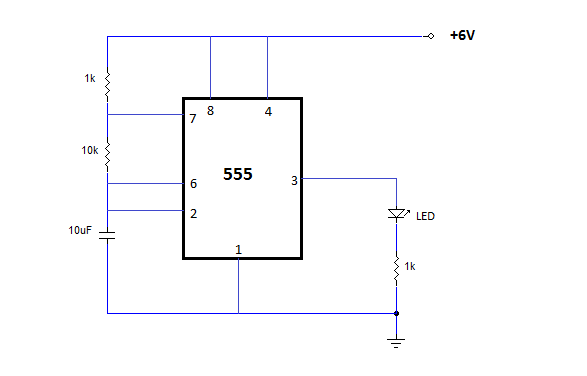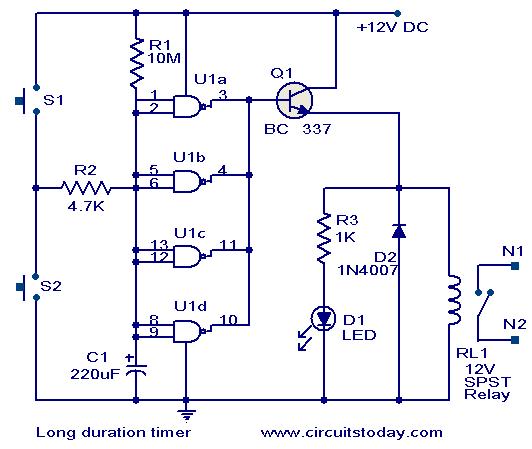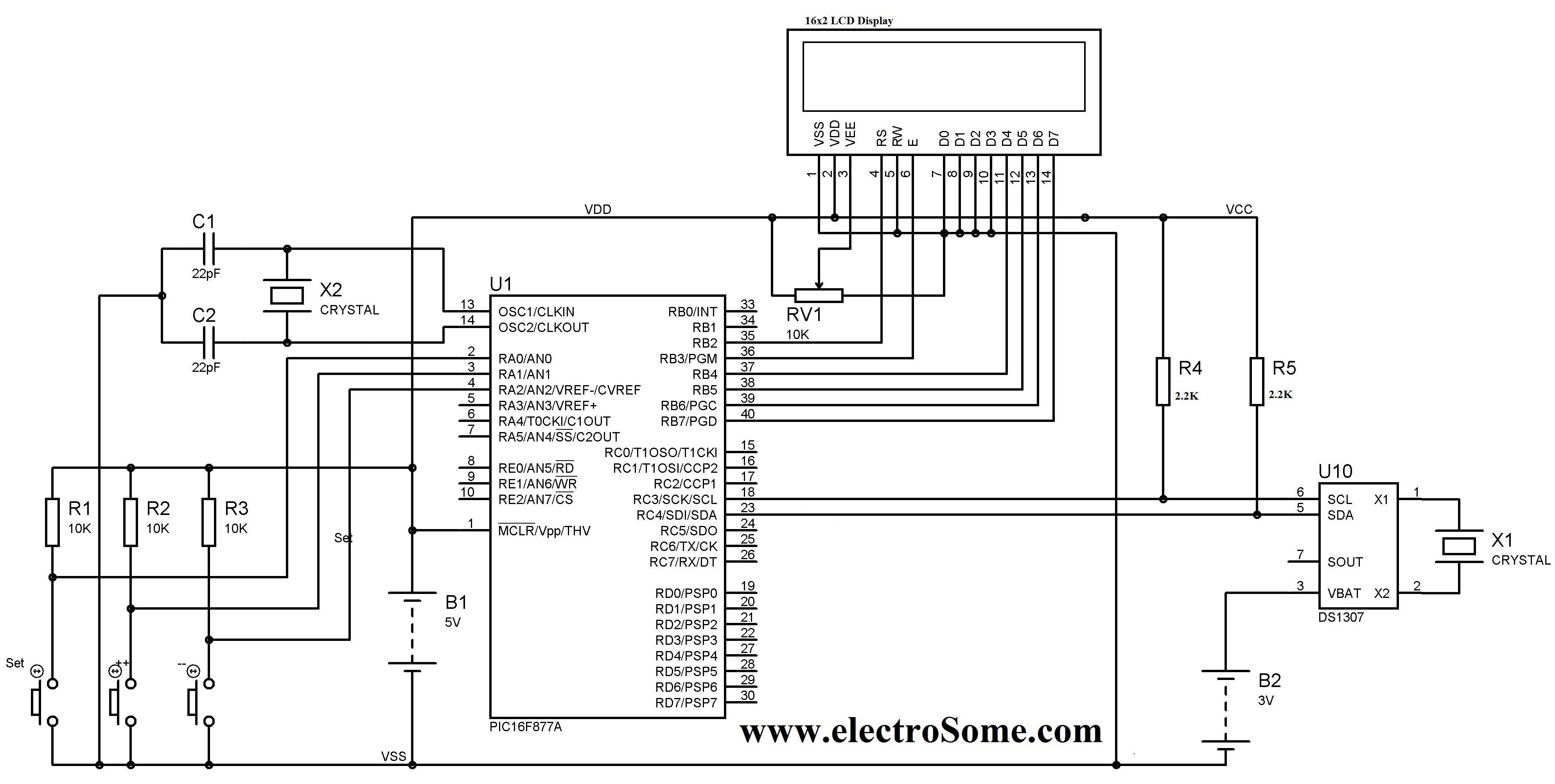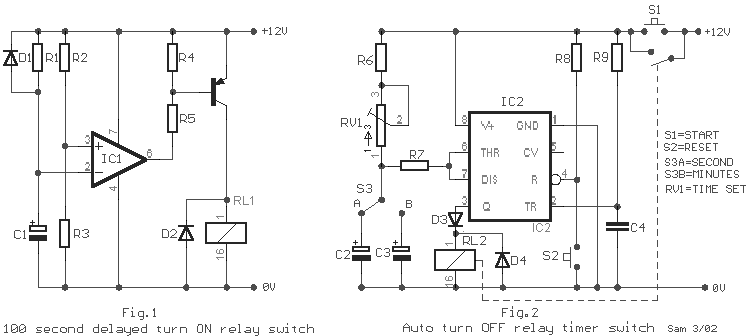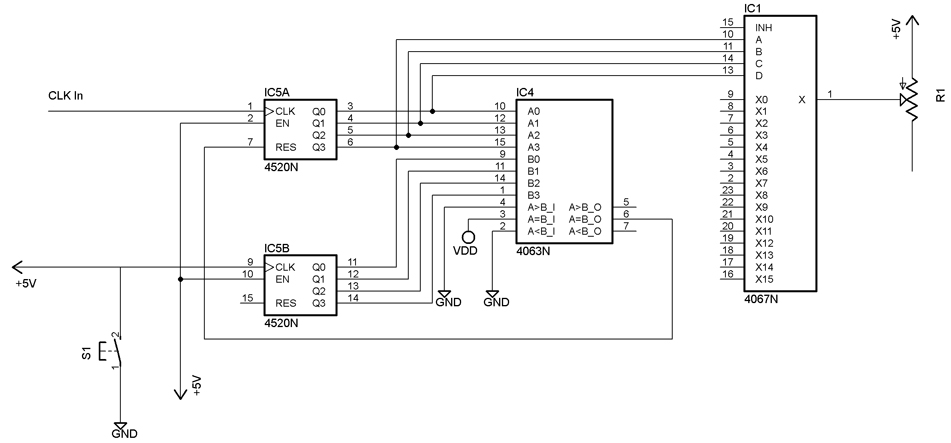
555 Timer as an Analog to Digital Converter
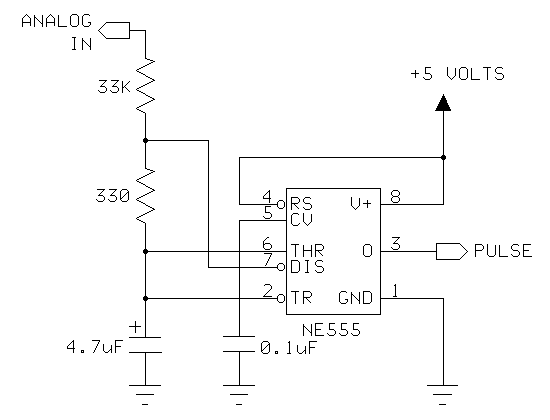
This circuit, based on the 555 timer, functions as a voltmeter and an analog-to-digital converter, converting analog input voltage into digital output pulses.
The 555 timer is a versatile integrated circuit commonly used for timing, oscillation, and pulse generation applications. In this configuration, it operates in astable mode to convert varying analog voltages into a series of digital pulses that can be counted or interpreted by a microcontroller or other digital logic devices.
The circuit typically consists of the 555 timer, resistors, capacitors, and a reference voltage source. The analog input voltage is applied to one of the timer's input pins, while a reference voltage is set at another pin to establish a threshold for the conversion process. The timing components (resistors and capacitors) determine the frequency of the output pulses, which correlate to the magnitude of the input voltage.
As the input voltage changes, the output pulse width varies accordingly. This pulse width can then be measured using a digital counter or microcontroller, which translates the width into a corresponding digital value. The resolution of the conversion is dependent on the timing components and the reference voltage used.
In practical applications, this 555 timer-based voltmeter and analog-to-digital converter can be employed in various fields, including automation, instrumentation, and embedded systems, where precise voltage measurements are required. The simplicity of the circuit design and the availability of the 555 timer make it an attractive option for engineers and hobbyists alike.This 555 timer based circuit is a kind of voltmeter, also an analog to digital converter, that converts the analog input voltage to digital output pulses 🔗 External reference
The 555 timer is a versatile integrated circuit commonly used for timing, oscillation, and pulse generation applications. In this configuration, it operates in astable mode to convert varying analog voltages into a series of digital pulses that can be counted or interpreted by a microcontroller or other digital logic devices.
The circuit typically consists of the 555 timer, resistors, capacitors, and a reference voltage source. The analog input voltage is applied to one of the timer's input pins, while a reference voltage is set at another pin to establish a threshold for the conversion process. The timing components (resistors and capacitors) determine the frequency of the output pulses, which correlate to the magnitude of the input voltage.
As the input voltage changes, the output pulse width varies accordingly. This pulse width can then be measured using a digital counter or microcontroller, which translates the width into a corresponding digital value. The resolution of the conversion is dependent on the timing components and the reference voltage used.
In practical applications, this 555 timer-based voltmeter and analog-to-digital converter can be employed in various fields, including automation, instrumentation, and embedded systems, where precise voltage measurements are required. The simplicity of the circuit design and the availability of the 555 timer make it an attractive option for engineers and hobbyists alike.This 555 timer based circuit is a kind of voltmeter, also an analog to digital converter, that converts the analog input voltage to digital output pulses 🔗 External reference
